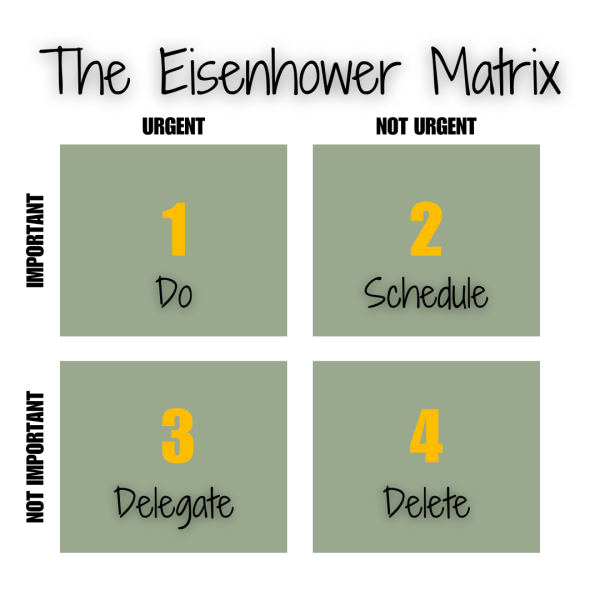How Our 34th President Can Help Tame Your To Do List
10/8/2024 by Dr. Rachel Dillinger, MD PMH-C, integrative and reproductive psychiatrist

For many people with ADHD, we live and die by our lists. They can help so much when it comes to remembering, tracking, and serving as a reminder that some progress has been made.
Unfortunately, they can also serve as a source of anxiety, overwhelm, and paradoxically lead to less getting done. Rewriting the same things on a new list time after time can be discouraging and generate shame and negative self-talk. What can we do? Enter President Eisenhower…
Eisenhower created the tool pictured above (the Eisenhower Matrix) which was later popularized by Stephen Covey, author of The 7 Habits of Highly Effective People. It can help with overwhelming lists and overwhelming lives. While I routinely use this with my ADHD patients, anyone could benefit from trying it out.
Break out your to do list and, if it’s on paper, grab four highlighters or colored pencils/markers. Choose one color for each quadrant and categorize things as you go. Alternatively, some people prefer to write out each item on a different slip of paper and categorize that way.
The left column is for things that are urgent, the right for those that are not. The top row is for things that are important, the bottom for things that are not.
Try not to get bogged down by determining an exact cutoff and go by gut feeling. Your sons chess practice is likely important to him, but may not be important to you.
After you have categorized things, take a look at how much you have in each quadrant.
Overwhelmingly quadrant 1’s and never seeming to get to quadrant 2’s or 3’s? Consider cloning yourself (kidding, please do not try this) or seeing how you can get more realistic distribution of labor at home, work, or otherwise. Putting out fires all the time and being on a constant deadline can be exhausting. This quadrant is also the easiest by far for ADHD folks to operate in because there’s lots of external pressure and deadlines. That doesn’t mean last minute procrastination doesn’t generate distress.
Quadrant 2 items have a tendency to not get done unless they are scheduled OR are more “preferred” types of activities that release dopamine. Be mindful of if you have a pattern of prioritizing these over quadrant 1’s, or if these never seem to get done. That can be a sign that there’s too much in quadrant 1.
Lots of quadrant 3’s? Delegate, delegate, delegate. Someone else might be able to take your son to chess or head up the upcoming holiday event planning committee at work. If it’s not important to you, it will be hard to get done. Intrinsic motivation is critical.
Lots of quadrant 4’s? These things are taking up space on your to do list, in your life, and generating a greater sense of overwhelm. Think hard about how you might be able to delete them or let them go. Returning the wrong book to amazon may not be possible anymore because it’s past the deadline, and you may get far more out of the negative space left behind (on paper AND in life) than what returning it would offer.
I’ll leave you with two last tips:
1. When you are asked to do something in the future, pause before answering and ask yourself “would I drop everything I have planned tomorrow to do this?” If the answer is no, your answer might be better off as a no, too, as this is likely to end up a quadrant 3 where you wish you had delegated it to someone else.
2. My favorite phrase: “I’m so sorry, this is a great opportunity but I don’t have the bandwidth for it right now.” (bonus if you can suggest someone in your stead!)
